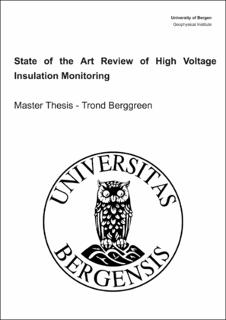| dc.description.abstract | The devastating effects of global warming and climate change are now well understood and there is broad unity that fundamental changes are needed. This is clearly addressed in the United Nations Sustainable Development Goals. The main perpetrator contributing to global warming and climate change is how we consume energy, which will need to transition from fossil fuels to renewable energy. The mass integration of renewable energy sources aimed to mitigate the effects of global warming, will greatly alter how we generate, transmit and consume energy. If we combine this with the large shift in load consumption, due to the integration of electrical vehicles, there is no doubt that the electrical transmission system will be subjected to major changes in future decades. The existing transmission grid is an aged and mature system, with large parts being installed all the way back in 60s and 70s, thus nearing the end of service. The existing grid has continuous performance issues and the knowledge on fault and ageing mechanisms are still insufficient. A thorough assessment of the current state of the grid is necessary in order to properly gauge its ability to cope with mass integration of HV systems, predominantly HVDC. A key part in assessing the current state of the grid while simultaneously increase its resilience is the utilization of high voltage monitoring methods, as they are key to prevent and predict transmission faults. Due to the increased requirement of long distance high capacity transmission, especially in submarine conditions, the knowledge and monitoring of cables will be of high importance. Compared to AC technology, DC have been regarded as niche and specialist field, thus have been allocated far less attention and research, hence the knowledge and technology of DC is still limited. This thesis will assess the state of the art of high voltage monitoring while simultaneously explore its role towards achieving the UN Sustainable Development Goals. Keywords: UN Sustainability Goals, Partial Discharges, Tan Delta, SF6, XLPE, High Voltage Monitoring | |
